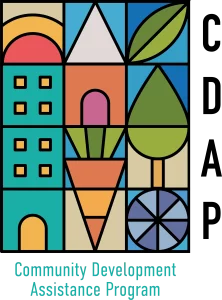The Chattahoochee River is one of the region’s natural wonders. But in many parts of metro Atlanta, access to the river is limited.
The Atlanta Regional Commission, The Trust for Public Land, City of Atlanta and Cobb County have commissioned a $1.5 million study of 100 miles of the river corridor to create a new vision for the Chattahoochee.
The study is being led by SCAPE, a New York-based landscape architecture and urban design studio, and local Atlanta partners over 18 months. We talked to Gena Wirth, a designer with SCAPE, about the firm’s approach and what they’ve learned so far about the Chattahoochee.
Your website says that SCAPE believes landscape architecture can enable positive community change. What do you mean by this?
Design is often thought about as something that happens internally, in an office in an independent environment like the classic “napkin sketch” kind of moment.
We design very differently, by an engaged process with communities that’s about really building capacity to effect positive change. This often means landscape architects are working as interpreters of a site or ecosystem and connectors between people’s desires for place and their reality of the system they’re working with on the ground.
What do you mean by community change?
When we talk about creating a template for change that’s community driven, it starts with the process of research and listening and understanding the many desires that people have for the places they live, then determining what is possible in a site, and beginning to connect the dots.
The Chattahoochee holds incredible potential in Atlanta metro area and beyond to be an open-space resource for a large metropolitan population. But many people don’t know that the river even exists. It’s a landscape that’s hidden in their own backyard.
That’s what we would mean when we say “connect with communities to enable positive change” — revealing both the potential of the river corridor and how to connect and create this greenway as a great space for people.
What are some of the biggest challenges you’ve seen facing urban watersheds and river projects around the country?
The first is the hidden nature of these water bodies and water systems. People don’t always see them. They’re not on the mental map.
Another issue is that ecologically, the scale of the challenges facing urban water bodies often are difficult for people to perceive. Many are suffering from upstream impacts. They have an urbanized watershed, so small actions within the watershed like developments and runoff and sedimentation impact the stream and the water body itself.
The third issue is jurisdictional boundaries that impact management and design along water bodies almost never align with ecological boundaries. The Chattahoochee River flows through multiple cities and counties, which makes it difficult to manage.

You and your colleagues at SCAPE recently toured the Chattahoochee and talked to the people along the way. What did you learn?
We have been really surprised and heartened by the incredibly passionate people that we met who care about the river corridor and the diversity of ways that people already use the river.
The overarching conclusion is this is the river that has been used in many ways over time. It was used by native populations, served as a barrier during Civil War, and today is a resource for power generation, drinking water, and disposal of treated wastewater.
We also learned a great deal about the ecology of the river. The river in our study area has a cooler section and a warmer section. The cooler section is really influenced by Buford Dam, and it sustains a non-native introduced population of trout. Trout fishing is a popular recreational activity along the Chattahoochee.
And we heard about new potential for restoration of native species, like the shoal bass in the southern portion of our study area, which requires warmer waters less influenced by the dam.
The next chapter is about rediscovering and reconnecting with the river as an ecological resource and recreational resource for this expanding region.
Resources for info:
Imagining the Future of the Chattahoochee River
Chattahoochee River Greenway Study
Public Sediment: Resilient By Design Challenge
$1.5M Chattahoochee study launches to better connect Atlantans with nature
What’s Next ATL, produced by the Atlanta Regional Commission, is a community resource that explores how metro Atlanta is growing and changing, and how the region is addressing its most pressing challenges.


